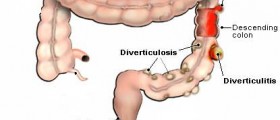
Intestinal blockage symptoms
This sort of a problem is also known under the names like Paralytic ileus, Intestinal volvulus, Colonic ileus and Pseudo-obstruction-intestinal. Symptoms of intestinal blockage will differ depending on the place of the blockage.
What are intestinal blockage symptoms
Diarrhea and constipation will usually occur separately, depending on the fact whether the blockage is in the small or the large intestine. If a person is experiencing only partial blockage, gas and stool can be passed. However, if the blockage is complete, bowel movement will be utterly restricted.
Blockage in the small intestine will be probably seen due to the bloating of the lower abdomen. Bloating is usually accompanied with excessive gas. If the blockage is complete, the doctor will be able to find it out with the use of stethoscope. The doctor will hear high pitched sounds.
Vomiting usually occurs in the later stages of the illness and is caused by the blockage in the small intestine. Doctors can determine the location of the blockage by the color of the vomit. If it is green the blockage is in the upper part of the small intestine. Obstruction of the lower part produces purple vomit.
If a person has blood in the stool or experiences weight loss it is probably because the blockage is caused by cancer. Loss of appetite is another symptom.
Weakness, fatigue, urination problems, fever and abdominal swelling are some of the other symptoms of intestinal blockage. People should remember that it is important to go straight to the hospital in order to get rid of the intestinal blockage while it is in its early stages.

















Your thoughts on this
Loading...